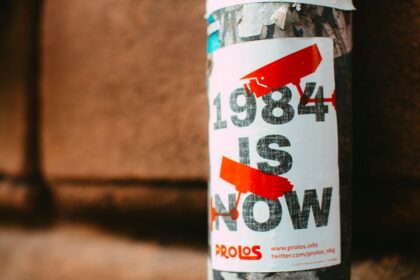Understanding the Core Principles of LinkedIn Ad Bidding
At the heart of any successful LinkedIn advertising campaign lies a nuanced comprehension of its ad bidding strategies. Unlike many other digital advertising platforms, LinkedIn serves a predominantly professional audience, making its ad environment distinct and demanding a tailored approach to bid management. The bidding process on LinkedIn is not merely about setting a price; it’s a dynamic interplay between your budget, your campaign objectives, the quality of your ad creative, and the competitive landscape for your target audience. Every interaction on the platform – from a click on a Sponsored Content ad to a view of a video or the submission of a Lead Gen Form – is influenced by the underlying bidding mechanism. Understanding this mechanism is paramount to maximizing your return on investment (ROI) and achieving your marketing goals.
The fundamental concept behind LinkedIn’s ad delivery is an auction system. When an impression opportunity arises – meaning a LinkedIn member loads their feed or visits a page where an ad can be displayed – the system identifies all eligible ads that could be shown to that specific user. Eligibility is determined by your campaign’s targeting parameters (e.g., job title, industry, company size, skills). From this pool of eligible ads, LinkedIn’s algorithm then runs an auction in real-time. The winning ad is not simply the one with the highest bid. Instead, LinkedIn aims to balance advertiser value with member experience. The system considers several factors, including the bid amount, the estimated action rate (how likely a user is to perform the desired action, like clicking or converting), and ad relevance. This ensures that users see ads that are likely to be of interest, while advertisers achieve their objectives efficiently. A higher estimated action rate can sometimes allow an ad with a lower bid to win the auction over an ad with a higher bid but lower predicted engagement. This emphasis on relevance and user experience means that simply outbidding competitors might not always be the most effective strategy; ad quality and audience alignment play equally critical roles. Therefore, a holistic approach combining smart bidding with compelling creative and precise targeting is essential.
Deep Dive into LinkedIn’s Automated Bidding Strategies
LinkedIn offers a range of bidding strategies designed to cater to different campaign objectives and advertiser comfort levels with manual control. Automated bidding strategies leverage LinkedIn’s sophisticated algorithms to optimize ad delivery and performance based on your chosen objective. These strategies are often recommended for advertisers who prefer to let the system handle the intricacies of real-time bidding, especially when aiming for efficiency and scale.
One of the primary automated bidding options available is Maximum Delivery. This strategy is designed to get the most results for your budget within your chosen objective. If your goal is to maximize impressions, clicks, or conversions within your daily or lifetime budget, Maximum Delivery is a strong candidate. LinkedIn’s algorithm will automatically adjust bids in real-time, aiming to spend your entire budget while acquiring as many of the desired actions as possible. This strategy is particularly useful when you have a clear budget and want to ensure maximum reach or action volume without needing to constantly monitor and adjust manual bids. It’s often recommended for campaigns focused on brand awareness, driving high volumes of website visits, or generating a large number of leads, especially when the cost-per-result is not the absolute top priority but rather the volume of results. The system takes into account audience competition, ad performance, and budget pacing to dynamically optimize bids. While it relinquishes direct control over individual bid amounts, it provides efficiency and can be highly effective in reaching campaign goals when the objective aligns with volume maximization.
Another crucial automated strategy is Target Cost. This option is ideal for advertisers who want to maintain a consistent average cost-per-result (e.g., cost per lead, cost per conversion). With Target Cost, you set a specific average cost that you are willing to pay for your desired outcome. LinkedIn’s algorithm then works to achieve that average cost, adjusting bids up or down for individual auctions to keep the overall average in line with your target. This strategy is particularly powerful for performance-driven campaigns where managing acquisition costs is critical. For instance, if you know your ideal Cost Per Lead (CPL) or Cost Per Acquisition (CPA), Target Cost allows you to communicate this directly to the LinkedIn system, which then optimizes delivery accordingly. It requires sufficient historical conversion data for the algorithm to learn and optimize effectively, typically at least 15-20 conversions per week. Without enough data, the algorithm may struggle to find the optimal bid range to hit your target, leading to inconsistent delivery or missed targets. Therefore, it’s often more suitable for campaigns that have been running for some time or have a clear, consistent conversion event tracked via the LinkedIn Insight Tag. Target Cost provides a valuable balance between automated optimization and cost control, offering predictability in your campaign spending for specific actions.
For certain objectives, particularly those focused on conversions, LinkedIn also offers Conversion Optimization. While not a standalone bidding strategy in the same vein as Maximum Delivery or Target Cost (it usually works with Maximum Delivery or Target Cost behind the scenes to achieve a specific conversion goal), it’s a critical component of automated bidding for performance marketers. When you select a conversion objective, LinkedIn’s system actively seeks out users who are most likely to complete that specific conversion event (e.g., filling out a form, downloading content, making a purchase). The bidding is then optimized to drive these high-value actions. This strategy requires the LinkedIn Insight Tag to be properly installed and conversion tracking to be set up accurately on your website or landing pages. Without this tracking, LinkedIn cannot attribute conversions and therefore cannot optimize for them. Conversion Optimization is highly recommended for lead generation, website conversions, and even job applications, as it directly aligns ad delivery with your most valuable business outcomes. The system learns over time which users are more likely to convert, which ad creatives resonate best, and at what price points conversions are most efficiently acquired.
In-Depth Analysis of Manual Bidding Strategies
While automated bidding strategies offer convenience and algorithmic optimization, manual bidding provides advertisers with precise control over their bids, allowing for granular adjustments based on specific campaign dynamics and insights. Manual bidding is often favored by experienced advertisers who have a deep understanding of their audience’s value and the competitive landscape, or for niche campaigns where algorithmic optimization might not have enough data to perform optimally.
The most common manual bidding strategy is Cost-Per-Click (CPC). With CPC bidding, you set the maximum amount you are willing to pay for each click on your ad. Your actual cost-per-click might be lower than your maximum bid, as LinkedIn’s auction system uses a “second-price auction” model – you only pay just enough to beat the next highest eligible bid, plus a small increment. CPC bidding is ideal for objectives where driving traffic to a website, landing page, or LinkedIn profile is the primary goal, such as Website Visits or Engagement campaigns. It gives you direct control over the cost of each visitor, making it easier to manage budgets for traffic acquisition.
- Pros of CPC Bidding:
- Direct Cost Control: You know the maximum you’ll pay per click, making budget forecasting for traffic acquisition more predictable.
- Focus on Engagement: It directly incentivizes the generation of clicks, which often signifies user interest and engagement with your ad content.
- Good for Traffic Generation: Excellent for driving visitors to your site to learn more, read content, or explore products/services.
- Transparency: Clearly shows the cost associated with each user interaction (click).
- Cons of CPC Bidding:
- Manual Optimization Required: Requires continuous monitoring and adjustment of bids to remain competitive and efficient.
- No Conversion Guarantee: A click does not guarantee a conversion. High CPCs can be misleading if the traffic doesn’t convert.
- Risk of Overspending: If bids are too high, you might spend your budget quickly without necessarily achieving desired downstream actions.
- Scalability Challenges: Manual adjustments for large-scale campaigns can be time-consuming and complex.
- When to Use CPC Bidding: Use CPC when your primary goal is to drive qualified traffic to a specific destination, and you want to maintain tight control over the cost of that traffic. It’s particularly useful for testing ad creatives and audience segments, as it directly reflects user interest. It can also be a good starting point for new campaigns before enough conversion data is available for automated strategies.
Another manual option is Cost-Per-Impression (CPM), where you set the maximum amount you are willing to pay for 1,000 impressions (views) of your ad. CPM bidding is inherently suited for brand awareness and reach-focused campaigns, as the objective is to maximize the number of times your ad is shown to your target audience, regardless of whether they click.
- Pros of CPM Bidding:
- Maximum Reach/Visibility: Prioritizes showing your ad to as many people in your target audience as possible.
- Brand Building: Effective for increasing brand recognition and mindshare.
- Predictable Impression Costs: You pay for visibility, offering a predictable cost for exposure.
- Good for High-Funnel Objectives: Ideal for the awareness stage of the marketing funnel.
- Cons of CPM Bidding:
- No Direct Engagement Guarantee: You pay for impressions, not clicks or conversions. High impressions don’t necessarily equate to high engagement or business results.
- Potential for Low CTR: If your ad creative isn’t compelling, you might get many impressions but very few clicks.
- Audience Saturation: Risk of over-exposing your ad to the same audience if frequency capping isn’t managed.
- When to Use CPM Bidding: Choose CPM when your primary objective is brand awareness, reaching a large number of unique users, or reinforcing your message through high visibility. It’s less suitable for direct response campaigns unless part of a broader full-funnel strategy.
For LinkedIn’s unique Message Ads (formerly Sponsored InMail), the manual bidding option is Cost-Per-Send (CPS). With CPS, you bid on the cost of each message successfully delivered to an eligible recipient’s LinkedIn inbox. This ensures you only pay when your message is sent, not just when it’s opened or clicked.
- Pros of CPS Bidding:
- Direct Delivery Guarantee: You pay for a guaranteed message send to a targeted individual.
- Personalized Reach: Allows for highly personalized, direct communication with prospects in their LinkedIn inbox.
- High Engagement Potential: Message Ads often have higher open rates than traditional email due to the professional context.
- Good for Niche Audiences: Effective for reaching specific, highly targeted individuals with a tailored offer or invitation.
- Cons of CPS Bidding:
- Higher Cost per Message: Can be more expensive than CPC or CPM due to its direct, personalized nature.
- Limited Audience: Not every user will be eligible to receive a Message Ad (e.g., if they’ve received too many recently).
- Requires Strong Call to Action: The message content must be compelling enough to drive opens and clicks; a send doesn’t guarantee action.
- When to Use CPS Bidding: Ideal for highly targeted lead generation, event invitations, content promotion to specific individuals, or recruiting top talent. It’s best used when you have a valuable offer that justifies the higher cost of direct outreach.
Finally, for Video Ads, LinkedIn offers Cost-Per-View (CPV) bidding. You set the maximum amount you are willing to pay for each view of your video ad. A “view” is typically defined as a user watching at least 2 seconds of your video while it’s at least 50% on screen, or clicking on the video to expand it.
- Pros of CPV Bidding:
- Focus on Video Consumption: Directly optimizes for video views, making it ideal for video content consumption goals.
- Brand Storytelling: Effective for conveying complex messages or showcasing products/services through engaging visuals.
- Engagement Metric: A view indicates some level of user interest in your video content.
- Cons of CPV Bidding:
- Defining a “View”: The 2-second definition might not be sufficient for deep engagement, requiring advertisers to consider longer view durations (e.g., 25%, 50%, 75%, 100% completion rates) as secondary metrics.
- No Direct Conversion Focus: A view doesn’t directly lead to a lead or sale without additional calls to action.
- Creative Dependency: Video ad performance is heavily dependent on the quality and engagement factor of the video itself.
- When to Use CPV Bidding: Use CPV when your primary objective is to increase video viewership, tell a brand story, educate your audience about a product or service, or generate awareness through visual content. It’s often part of a broader awareness or consideration phase strategy.
Factors Influencing Bid Strategy Choice and Optimization
Selecting the optimal bidding strategy for your LinkedIn ad campaigns is not a one-size-fits-all decision. It’s a strategic choice heavily influenced by a confluence of factors unique to each campaign and business objective. A deep understanding of these variables allows advertisers to make informed decisions that lead to greater efficiency and higher ROI.
The most critical factor influencing your bid strategy is your Campaign Objective. LinkedIn’s campaign manager explicitly asks you to choose an objective at the outset, and this choice fundamentally dictates the available bidding strategies.
- Awareness (Brand Awareness, Video Views): For these objectives, where the goal is maximum exposure, CPM (manual) or Maximum Delivery (automated) are often the go-to choices. CPV is specific to Video Views. The focus is on getting your message in front of as many relevant eyes as possible.
- Consideration (Website Visits, Engagement, Video Views): If you want to drive traffic or encourage interactions, CPC (manual) or Maximum Delivery (automated) for website visits/engagement are suitable. CPV for Video Views focuses on views, potentially leading to clicks. The aim here is to get users to engage more deeply with your content or brand.
- Conversion (Lead Generation, Website Conversions, Job Applicants): For direct response objectives, where measurable actions like form submissions, purchases, or applications are paramount, automated strategies like Target Cost or Maximum Delivery with Conversion Optimization are highly recommended. Manual CPC can be used, but you’ll need robust conversion tracking to optimize manually towards a CPA goal. The system optimizes to find users most likely to convert, making these strategies incredibly valuable for sales and marketing qualified leads.
Your Budget plays a significant role in determining bid strategy. Larger budgets generally allow more flexibility and can benefit from automated strategies that require sufficient spend to learn and optimize. Smaller budgets might necessitate more manual control to prevent overspending and to ensure every dollar is spent efficiently. For instance, if you have a very limited budget, a highly controlled manual CPC bid might be safer than a Maximum Delivery strategy that could exhaust your budget quickly without sufficient downstream value. Conversely, a generous budget allows the algorithm to explore a wider range of bid points and audience segments, which can lead to better performance over time with automated options.
Audience Size & Competition are equally critical. If your target audience is very niche and small, manual bidding might give you more control over who sees your ads, preventing audience fatigue and ensuring you’re not overpaying for limited impressions. In highly competitive industries or for popular audience segments, automated bidding strategies (like Maximum Delivery or Target Cost) can be advantageous as they leverage LinkedIn’s vast data and real-time insights to find optimal bid points and win auctions more efficiently than a human can. However, in such competitive scenarios, your bids may need to be higher, or your ad quality exceptionally good, regardless of the strategy. A broad audience might benefit from Maximum Delivery to maximize reach, while a very specific, high-value audience might justify higher manual CPC or CPS bids.
The Quality of Your Ad Creative and its associated Relevance Score (an internal LinkedIn metric, similar to other platforms’ quality scores, though not directly exposed in the same way) significantly impact bid effectiveness. A highly relevant, engaging ad creative with a strong call to action will naturally lead to higher click-through rates (CTR) and conversion rates. LinkedIn’s auction system favors ads with higher estimated action rates. This means that a well-performing ad might win auctions with a lower bid than a poorly performing ad with a higher bid. Therefore, investing in compelling visuals, clear messaging, and relevant landing pages can effectively lower your true cost-per-result, irrespective of the chosen bidding strategy. Ad copy that resonates deeply with the target audience, strong value propositions, and clear, enticing calls to action are non-negotiable for bid efficiency.
The Landing Page Experience is the logical next step after a user clicks your ad, and its quality has a direct impact on your conversion rates. If your landing page is slow-loading, not mobile-responsive, confusing, or doesn’t deliver on the promise of your ad, users will bounce, and your conversion rates will suffer. This, in turn, negatively impacts the effectiveness of conversion-focused bidding strategies (like Target Cost or Conversion Optimization). LinkedIn’s algorithms will eventually learn that users are not converting on your landing page, potentially reducing your ad’s perceived value in the auction and increasing your effective cost per desired action. A seamless, relevant, and optimized landing page is crucial for maximizing the value of every click you acquire through your bids.
The Stage in the Marketing Funnel where your campaign sits should also guide your bidding.
- Awareness Stage: Focus on reach and visibility, so CPM or Maximum Delivery (for impressions/video views) are suitable.
- Consideration Stage: Drive engagement and traffic, making CPC or Maximum Delivery (for clicks) appropriate.
- Conversion Stage: Aim for specific actions, thus making Target Cost or Maximum Delivery (for conversions) the best fit, relying on the Insight Tag for optimization.
Finally, Data Availability is paramount, especially for automated strategies. For Target Cost or Conversion Optimization to work effectively, LinkedIn’s algorithms need sufficient conversion data to learn and identify patterns. If you’re launching a brand new campaign with no historical data, starting with a more general strategy like Maximum Delivery or manual CPC to gather initial data might be prudent. Once you’ve accumulated a critical mass of conversions (typically at least 15-20 per week), you can then transition to more sophisticated automated conversion-focused bidding. The more data you feed the system, the smarter and more efficient its bidding decisions become.
Advanced Bidding Techniques and Optimization
Beyond selecting the primary bidding strategy, a range of advanced techniques and continuous optimization practices are vital for extracting maximum value from your LinkedIn ad spend. These strategies allow for finer control, more intelligent resource allocation, and a proactive approach to improving campaign performance.
Bid Adjustments are a sophisticated way to modify your bids based on specific performance indicators or audience segments, although LinkedIn’s platform has evolved to incorporate many of these “adjustments” into its automated algorithms. Historically, platforms allowed manual bid adjustments for factors like device type, time of day, or geographic location. While LinkedIn’s current automated bidding largely handles this behind the scenes for optimal performance (e.g., Maximum Delivery or Target Cost will automatically bid more aggressively for certain devices or times if they historically yield better results), understanding the underlying principle is crucial. For manual bidding (CPC, CPM), you implicitly make these adjustments by observing performance. If you notice that conversions from mobile devices are significantly cheaper or more profitable, you might set a higher manual bid when targeting mobile users, or conversely, a lower bid if mobile performance is poor. Similarly, if certain geographic regions consistently yield higher quality leads, you might allocate more budget or set higher bids for those areas through separate campaigns or more refined targeting. The essence here is not always a direct “bid adjustment slider” but rather strategic campaign segmentation and careful monitoring of performance by various dimensions to inform manual bid changes or budget allocation.
Understanding Bid Ceilings and Floors is critical, whether you’re using manual or automated strategies. A bid ceiling is the maximum amount you’re willing to pay per desired action (e.g., per click, per impression). For manual bids, this is your explicit bid amount. For automated bids like Target Cost, it’s the average you aim for, but the system might bid higher on individual auctions to achieve that average. Setting an appropriate bid ceiling is crucial to avoid overpaying. Conversely, there’s often an effective bid floor – a minimum bid amount below which your ads simply won’t get enough impressions or clicks because they’re consistently outbid by competitors or deemed insufficiently valuable by LinkedIn’s auction system. If your ads are experiencing low delivery, it’s often a sign that your bid is below the effective floor for your chosen audience and objective. Identifying this floor often requires testing – gradually increasing your bid until delivery picks up. Striking the right balance between a competitive bid (above the floor) and an economical one (below your ceiling) is key to efficient spending.
Budget Pacing refers to how LinkedIn spends your budget over the duration of your campaign. By default, LinkedIn primarily uses Standard Pacing, which aims to distribute your budget evenly throughout the day or campaign lifetime. This prevents your budget from being exhausted too quickly, ensuring your ads are visible throughout the target period. While some platforms offer “accelerated pacing” (spending your budget as fast as possible), LinkedIn’s focus is on efficient, optimized delivery, making standard pacing the norm for most objectives. Understanding pacing is important for manual bidding especially, as an overly aggressive manual bid without sufficient budget can lead to rapid budget depletion and missed opportunities later in the day. Automated strategies typically manage pacing inherently.
Frequency Capping is particularly relevant for CPM and brand awareness campaigns. It allows you to limit the number of times a unique user sees your ad within a specified period (e.g., “show this ad to a user no more than 3 times every 7 days”). This is crucial for preventing audience fatigue, ad blindness, and wasted impressions. Over-exposing your audience can lead to negative brand sentiment and diminishing returns. By managing frequency, you ensure your ad budget is used to reach a broader segment of your audience or to reinforce your message without annoying users. While not a direct bidding strategy, it optimizes the impact of your CPM bids by ensuring each impression has a higher potential for positive brand recall.
Audience Expansion is a LinkedIn feature that allows the platform to reach beyond your precisely defined target audience to find additional relevant users who share similar characteristics. When used with automated bidding strategies like Maximum Delivery, Audience Expansion can significantly increase reach and volume, potentially finding cheaper impressions or clicks outside your initial strict parameters. However, it’s crucial to monitor the quality of traffic/conversions from expanded audiences, as they might not be as highly qualified as your core target. For conversion-focused campaigns, ensure your conversion rates don’t drop significantly when Audience Expansion is enabled. It’s a tool for scale, but it requires careful monitoring to ensure cost-efficiency.
Retargeting Bids often warrant different considerations. When targeting users who have already interacted with your brand (e.g., visited your website, engaged with previous ads, or filled out a Lead Gen Form), these “warm” audiences are typically more likely to convert. Therefore, you might be willing to bid higher for these segments compared to cold audiences. Automated strategies like Target Cost can be very effective for retargeting campaigns, as the system can leverage the high conversion likelihood of these users to achieve your CPA goals. Manual CPC bids for retargeting can also be set aggressively to ensure you capture these high-intent users. The value of a retargeted impression or click is often significantly higher, justifying a more competitive bid.
Lookalike Audience Bidding also presents unique considerations. Lookalike audiences are created by LinkedIn based on the characteristics of your existing customers or high-value leads. While these audiences are “similar” to your best customers, they are still new prospects. Bidding strategies for lookalikes might initially lean towards Maximum Delivery or CPC to test the audience and gather data. Once conversion patterns emerge, transitioning to Target Cost is often beneficial. The bids for lookalikes often fall somewhere between cold prospecting and warm retargeting, reflecting their potential value.
The LinkedIn Insight Tag is the cornerstone of any conversion-focused bidding strategy. Without it, LinkedIn cannot accurately track conversions on your website, rendering strategies like Target Cost and Conversion Optimization ineffective. Proper implementation of the Insight Tag and meticulous setup of conversion events are non-negotiable for performance marketing on LinkedIn. The more granular and accurate your conversion tracking, the better LinkedIn’s algorithms can optimize your bids towards your actual business objectives. This includes setting up specific events for different stages of the funnel (e.g., “lead magnet download,” “demo request,” “purchase”) to provide richer data to the system.
Finally, understanding Attribution Models is crucial for evaluating the true value of your bids and conversions. LinkedIn, like other platforms, provides various attribution models (e.g., Last Touch, First Touch, Linear). The chosen attribution model influences which touchpoint gets credit for a conversion, and thus impacts how you might perceive the value of different campaigns or even different bidding strategies. For instance, a campaign running on a CPM bid for brand awareness might not get “last touch” credit for a conversion but contributes significantly to the customer journey. Understanding this helps you make informed decisions about where to allocate budget and how aggressively to bid across different campaign types that contribute at various points in the sales funnel.
Troubleshooting Common LinkedIn Ad Bidding Issues
Even with a well-planned strategy, advertisers frequently encounter challenges with LinkedIn ad bidding. Understanding common issues and their potential solutions is critical for maintaining campaign performance and avoiding wasted spend. Proactive troubleshooting ensures that your valuable ad budget is always working efficiently towards your objectives.
One of the most frequently reported issues is Low Delivery or No Impressions. This means your ads are not being shown to your target audience, or are being shown very infrequently.
- Potential Causes & Solutions:
- Bid Too Low: This is the most common reason. Your bid is simply not competitive enough to win auctions against other advertisers targeting the same audience.
- Solution: Increase your bid. If using manual CPC/CPM, gradually raise it. If using an automated strategy like Target Cost, review your target CPA/CPL – it might be too low. For Maximum Delivery, ensure your budget is sufficient for the audience size and competition.
- Audience Too Small/Niche: If your targeting is extremely narrow, there might not be enough eligible users to serve ads to consistently.
- Solution: Broaden your audience slightly if appropriate, or combine multiple small segments. Consider enabling Audience Expansion (with caution).
- High Competition: Many advertisers might be bidding for the same valuable audience segments, driving up the effective bid floor.
- Solution: Increase bids. Also, focus on improving Ad Relevance (CTR, creative quality) to potentially win auctions at a lower price point.
- Low Ad Relevance/Quality Score: If your ad is deemed irrelevant or has a very low estimated action rate, LinkedIn will prioritize other ads.
- Solution: Refresh creative, improve ad copy, ensure strong ad-to-landing-page relevancy. A/B test different ad variations.
- Budget Too Low: Your daily or lifetime budget might be insufficient for the chosen audience size and objective, especially with Maximum Delivery.
- Solution: Increase budget if feasible. Alternatively, narrow your targeting to a more focused, high-value segment to stretch the existing budget further.
- Incorrect Targeting/Exclusions: Double-check your targeting parameters. An accidental exclusion or a logical error in audience setup can severely limit reach.
- Solution: Review and refine audience targeting, ensuring there are no unintended exclusions.
- Bid Too Low: This is the most common reason. Your bid is simply not competitive enough to win auctions against other advertisers targeting the same audience.
High Costs, Low Conversions is another frustrating problem, especially for performance-driven campaigns. You’re spending money, but not getting the desired business outcomes.
- Potential Causes & Solutions:
- Ineffective Bid Strategy for Objective: Using a CPC bid for conversions without strong landing page optimization, or using Maximum Delivery when Target Cost would be more appropriate for managing CPA.
- Solution: Re-evaluate your chosen bidding strategy in alignment with your primary objective. If conversions are key, leverage Target Cost or Conversion Optimization with precise target CPA.
- Poor Landing Page Experience: As discussed, a bad landing page kills conversions, even with quality clicks.
- Solution: Optimize landing page speed, mobile responsiveness, clarity of message, and conversion elements (e.g., clear CTA, concise forms). Ensure ad message matches landing page content.
- Irrelevant Traffic: Your ads might be getting clicks, but from users who aren’t truly interested or qualified. This often stems from broad targeting or misleading ad creatives.
- Solution: Refine audience targeting to be more specific to your ideal customer profile. Ensure ad copy and visuals clearly qualify prospects and set correct expectations.
- Conversion Tracking Issues: If LinkedIn isn’t correctly tracking conversions, its algorithms can’t optimize effectively.
- Solution: Verify LinkedIn Insight Tag implementation and conversion event setup using the LinkedIn Tag Helper Chrome extension or event manager. Ensure all desired conversion actions are being tracked accurately.
- Ad Creative/Offer Mismatch: The ad promises one thing, but the landing page or offer delivers something else, leading to high bounce rates and low conversions.
- Solution: Align ad creative and offer with landing page content. Ensure the value proposition is clear and consistent throughout the user journey.
- High Frequency: Users seeing the ad too often might lead to ad fatigue and lower conversion rates over time.
- Solution: Implement frequency capping, especially for awareness campaigns that might lead to later conversions.
- Ineffective Bid Strategy for Objective: Using a CPC bid for conversions without strong landing page optimization, or using Maximum Delivery when Target Cost would be more appropriate for managing CPA.
Inconsistent Performance refers to campaigns that perform well one day and poorly the next, or fluctuate wildly in terms of cost or volume.
- Potential Causes & Solutions:
- Daily Budget Fluctuations: If your daily budget is too low, LinkedIn might struggle to find consistent optimal delivery opportunities.
- Solution: Ensure a sufficient daily budget, especially for automated strategies that need room to learn and scale.
- Audience Saturation: For smaller audiences, ad performance can naturally dip once the majority of the audience has been exposed multiple times.
- Solution: Expand your audience, rotate ad creatives, or implement careful frequency capping to prevent over-exposure.
- Campaign Changes: Frequent, drastic changes to bids, targeting, or creatives can reset the learning phase for automated strategies.
- Solution: Make iterative, data-driven changes. Allow automated strategies sufficient time (e.g., 7-10 days) to learn before making significant adjustments.
- External Factors: Seasonality, major industry news, or competitor activity can influence ad performance.
- Solution: Monitor external trends. Be prepared to adjust bids or strategies in response to significant market shifts.
- Ad Scheduling (if applicable for your strategy): If you’ve manually set specific times for ads to run, inconsistencies might arise if peak times are missed or off-peak times perform poorly.
- Solution: Review ad scheduling. For automated strategies, LinkedIn handles this dynamically.
- Daily Budget Fluctuations: If your daily budget is too low, LinkedIn might struggle to find consistent optimal delivery opportunities.
Budget Not Fully Spent is an issue where your campaign isn’t utilizing its allocated budget, indicating missed opportunities.
- Potential Causes & Solutions:
- Bid Too Low: Similar to low delivery, your bid might be too low to compete for sufficient impressions or clicks to spend your budget.
- Solution: Increase bids.
- Audience Too Small/Too Many Exclusions: Insufficient audience size to spend the budget.
- Solution: Broaden targeting, review exclusions.
- High Competition/Low Ad Relevance: Your ads are consistently losing auctions.
- Solution: Improve ad quality/relevance, or increase bids to become more competitive.
- Restrictive Targeting Parameters: Overly specific targeting combined with a substantial budget can lead to underspending.
- Solution: Loosen targeting slightly, or accept the underspend if the existing targeting delivers high-quality results.
- Campaign Pause/Review: Ensure the campaign isn’t paused or stuck in review.
- Solution: Check campaign status in Campaign Manager.
- Bid Too Low: Similar to low delivery, your bid might be too low to compete for sufficient impressions or clicks to spend your budget.
Addressing these common bidding issues often requires a systematic approach: diagnose the root cause, implement a targeted solution, monitor the impact, and iterate. It’s a continuous process of refinement, not a one-time fix.
Best Practices for Maximizing ROI through LinkedIn Ad Bidding
Maximizing your return on investment (ROI) from LinkedIn ad campaigns hinges on a disciplined approach to bidding, combined with holistic campaign management. It’s not just about setting a bid and forgetting it; it’s about continuous optimization, strategic decision-making, and leveraging all available insights.
-
Start with Clear and Measurable Objectives: Before you even think about bids, define precisely what you want to achieve. Is it brand awareness, website traffic, leads, or conversions? Your objective directly dictates the most suitable bidding strategy and the metrics you’ll track for success. A vague objective leads to arbitrary bidding and difficulty in measuring ROI. For example, if “leads” is the objective, define a qualified lead and set a target Cost Per Lead (CPL) from the outset.
-
Segment Audiences Wisely: Different audience segments will have different values to your business and different competitive landscapes. A C-suite executive audience might justify a higher bid than entry-level professionals. Create distinct campaigns or ad groups for different high-value segments, allowing you to tailor your bids and creatives to each. This granular approach ensures you’re not overpaying for less valuable clicks or under-bidding for highly profitable ones. Using LinkedIn’s powerful targeting options (job title, seniority, company size, skills, groups) is key here.
-
Craft Compelling and Highly Relevant Creatives: As extensively discussed, ad quality directly impacts your effective bid by influencing CTR and relevance. A compelling headline, engaging ad copy, and visually appealing images or videos will earn you more clicks and conversions at a lower cost, regardless of your bid strategy. Continuously A/B test different ad variations to identify what resonates best with your audience. Remember the ad auction favors high-performing ads.
-
Monitor Performance Diligently and Regularly: Campaign performance is not static. What works today might not work tomorrow. Set up a routine for checking key metrics: impressions, clicks, CTR, conversions, CPL/CPA, and budget pacing. Look for trends, anomalies, and opportunities. LinkedIn Campaign Manager offers robust reporting tools; leverage them. Daily or weekly checks are often necessary, especially for new campaigns or significant bid changes.
-
Test, Test, Test: A/B testing is not just for creatives; it applies to bids and strategies too.
- Test Bidding Strategies: If you’re unsure between Maximum Delivery and Target Cost, run small tests.
- Test Bid Amounts: For manual CPC/CPM, experiment with slight increases or decreases to find the sweet spot between delivery and cost.
- Test Audiences: Launch identical campaigns targeting slightly different audience segments to see which performs best at what cost.
- Test Landing Pages: A/B test different landing page layouts, CTAs, or form lengths to optimize conversion rates, which directly impacts the true value of your bids.
-
Leverage LinkedIn’s Analytics and Insights: Beyond standard metrics, dive deep into LinkedIn’s demographic reports, conversion demographics, and other insights. Understand who is converting, what companies they work for, and their job functions. This data can inform future bid adjustments, targeting refinements, and creative development. For instance, if you find that leads from a particular industry convert at a 2x higher rate, you might consider allocating more budget or setting higher bids for that industry.
-
Understand the Lifetime Value (LTV) of a Customer: This is a crucial strategic consideration. If you know the average LTV of a customer acquired through LinkedIn, you can calculate a justifiable Cost Per Acquisition (CPA) that ensures profitability. Knowing your maximum profitable CPA allows you to bid aggressively for high-value leads or conversions, even if the immediate cost seems high. This long-term perspective is essential for sustainable growth.
-
Conduct Competitor Analysis (Indirectly): While you can’t see competitors’ exact bids, observing their ad frequency, creative types, and presence in your target feeds can give you clues about the competitive landscape. If you see many competitors in a particular audience segment, you know the bids for that segment are likely higher, and you’ll need a stronger ad or a more competitive bid to win.
-
Consider Ad Scheduling for Manual Bidding (If Applicable): While LinkedIn’s automated strategies manage delivery dynamically throughout the day/week, if you’re using manual bidding for very specific objectives or have data indicating certain hours/days yield significantly better results (e.g., lower costs, higher conversion rates), you might consider using ad scheduling to only run ads during those peak performance windows. This maximizes the efficiency of your manual bids.
-
Regularly Review and Adapt Bid Strategies: The digital advertising landscape is constantly evolving, as are LinkedIn’s algorithms and your audience’s behavior. What worked six months ago might not be optimal today. Set a schedule (e.g., monthly or quarterly) to review your overall bidding strategy in light of campaign performance, business goals, and platform updates. Be prepared to pivot and experiment.
By meticulously applying these best practices, advertisers can navigate the complexities of LinkedIn ad bidding with confidence, transforming their campaigns into powerful engines for professional growth and achieving substantial ROI. The combination of strategic bidding, compelling creative, precise targeting, and continuous optimization forms the bedrock of highly effective LinkedIn advertising.











